SETTING: ST. LOUIS, MISSOURI
|
TABLE OF CONTENTS
|

Overview:
Founded in 1764, St Louis is a major inland port city located on the west bank of the Mississippi River in the State of Missouri. Named after King Louis IX, the only canonised King of France, the area features rich French heritage and a proud history as America’s gateway city to the western frontier.
St Louis was sold to the United States from France in 1803 as part of the Louisiana Purchase, becoming the territorial capital. In 1818 steamboats began arriving from New Orleans and other eastern markets, improving trade and relocation. Immigrants from Germany and Ireland arrived in strong numbers in the 1840s and the city’s population grew rapidly until it was larger than New Orleans in the mid-1800s. The American Civil War featured no combat but a river blockade to the south hurt St Louis’ economy. After the war the city profited greatly and re-energized by trading with the west and completed the first bridge across the river, Eads Bridge, in 1874.
The World’s Fair was hosted by St Louis in 1904. Proceeds from the fair helped establish the St Louis Zoo, Missouri History Museum, St Louis Art Museum, and Forest Park. St Louis became the first non-European city to host the Summer Olympics, also in 1904. A darker period began when racial discrimination affecting housing and employment began to divide the city in 1910 and continued into the late 1940s. The NAACP successfully integrated war factories and the Shelley vs. Kraemer US Supreme Court decision helped alleviate most de jure discrimination, though de facto discrimination continued into the 1970s until educational desegregation was implemented by a court challenge.
The city’s population peaked in 1950 and has been continually declining due to suburbanization, most heavily up until the 1990s. The 2000s have seen a period of urban renewal in St Louis, though despite a World Leadership Award in 2006, the population continues to decline. A Movoto Real Estate blog article from 2013, which used the ‘7 Deadly Sins’ by which to create a rating scheme, listed St Louis as America’s most sinful city. Due to the prohibition of strip joints within the city limits, Lust received a low score. However, high scores in Gluttony, Pride, and Sloth paired with leading levels of Wrath and Envy have rocketed St Louis to the top of the list.
From the banks of the world’s fourth longest river, the Gateway Arch welcomes your arrival to one of America’s most historic cities. As violent as it is vibrant, St Louis will soon reveal who you will meet and where you will stand.
History of Kindred:
1815: The contentious War of 1812 occupied Kindred attentions during the thirty-two month conflict. The United States declared war primarily due to trade restrictions brought on by Britain’s existing war with France, American interest in annexing Canada, and various insults to national honor and humiliations on the high seas. When the war concluded at the end of 1814, neither side had expanded their territory which left America in control of her still-growing borders. With the Napoleonic Wars also concluding, now allowing for greater ease of travel, many French Ventrue were desiring a new region in which to be insulated from the dangers and risks of continuing territorial conflict. St Louis, conveniently located along the Mississippi River and containing deep French roots, was the focus of many French Kindred for decades. The greater area and city itself was ruled by the Ventrue, posing as wealthy landlords of farming plantations and booming business merchants. This continued without interruption until the mid 1800s.
1845: German and Irish immigrants began to swell the St Louis area by way of the Mississippi River and trade routes originating in Boston and New York that passed through Cleveland, Detroit, and Chicago. St Louis, primarily controlled by the Ventrue, now experienced an influx of Brujah, Toreador, and Gangrel all hungry to experience this western gateway for different reasons. The Gangrel began to feel suffocated by ever expanding American cities on the east coast and along the Great Lakes. The Toreador followed the slow and steady evolution of American music from New Orleans and Kansas City. The Brujah, young and impassioned, sought to escape the violence and organized crime in other cities - only to establish the same thing in St Louis.
1864: The American Civil War rages on south and east of St Louis. No actual combat is experienced in or near the city, but a blockade of the river in the gulf by the Union Navy prevents many critical supplies and provisions from sailing north to St Louis. This, combined with the line of conflict between the Union and Confederacy, makes travel for Kindred moving westward much more difficult. The Toreadors and Brujah accuse the Ventrue of manipulating the Kine in this direction to prevent St Louis from experiencing more and more immigrant Kindred that are not Ventrue. The Ventrue deny the validity of the allegations, claiming that closed trade routes and the war are hurting their business interests. However, many local Ventrue maintain strong business holdings by continuing to run plantations that farm food and run businesses that provide supplies and resources for the Union Army. In 1865, at the end of the summer, local Brujah enlist the support of area Kine and set fire to many local crops owned by Ventrue - destroying what would have been profitable harvests. Local Toreador manipulate area Kine into avoiding transactions with businesses owned by the Ventrue. By spring of 1866, similar to and in the wake of the Union’s victory, the Toreador claim Praxis over the socially and financially impoverished Ventrue.
1883: The Toreador remain in control, displaying impressive financial and cultural prowess that leads to the construction of Eads Bridge in 1874. This bridge, the first in the area across the river providing instant access to the eastern bank, proves their commitment to repairing the damage they claim the Ventrue inflicted several decades prior. The Brujah, supportive of the Toreador to this point, begin to attract negative attention from Ventrue and Toreador for their unstable street gangs and growing levels of violence preying on St Louis’ emerging affluence. In 1890 the Ventrue, experiencing stability, funnel resources and attention to the St Louis Police Department for several years. This leads to the break-up of many Brujah-led gangs and greatly calms the city. With relative peace at hand, Ventrue launch new efforts to again grow their business and farming empire.
1904: The Louisiana Purchase Exposition (also known as the St Louis World’s Fair) commences as a centennial celebration of the 1803 Louisiana Purchase. This event features travelers from across the globe displaying the latest achievements in manufacturing, technology, fine arts, civics, science, and education. Also in 1904, the Summer Olympics kick off and the Ventrue proudly take credit for both events and all the enrichment they bring to the city. This claim is widely accepted, leaving the Toreador scrambling to maintain influence. The fair and its diversity also attracts the arrival of Tremere, Nosferatu, and Malkavian Kindred from around the globe.The Malkavians were attracted by the influx of culture and took advantage of the fair to bring about their madness in ways often dismissed as sidewalk performance art. They also posed as psychiatrists or patients to same. Surprisingly, during this time, the Nosferatu were quiet, too quiet almost and were rarely seen or heard from unless actively and successfully sought. It is believed that they were much smaller in number than suggested due to the city’s lack of a modern underground sewer and tunnel system. The Tremere arrived in throngs as travelers and newcomers to this gateway began to dabble in alternative religions such as the occult, which allowed them to practice more openly albeit within the strict confines of the Masquerade. Ventrue are quick to lobby for support, highlighting the Toreador as too single-minded to maintain long-term control of a city. With the support of Malkavian, Tremere, Nosferatu, and Gangrel - the Ventrue seize Praxis from the limping Toreador, with the seemingly disorganized Brujah looking on.
1927: The early 1900s see the Ventrue back in control of St Louis, a position they feel their history and heritage virtually entitle them to. The Toreador settle for peace and stability as America’s music culture begins to explode with the evolution of ragtime and the very early beginnings of big band jazz. The apparently disorganized Brujah have calmed from their nights of organized street gangs and have become the local court’s trusted group of muscle and action to protect a more unified Camarilla court. The Tremere have spent their time appearing cooperative as they establish a solid Chantry and foothold in the area. The Gangrel, while not particularly fond of St Louis’ continual growth as an urban area, are stable and supportive in pairing with Brujah to provide local defense. The city’s underground sewer and tunnel system is now established, leading to the arrival of more Nosferatu who initially toe the line beneath Ventrue rule. Malkavians are steadily coming and going from the city with no real discernable footprint left, due in large part to the emergence and strength of the Kirkbride asylum system in the United States. Until 1929, things were stable and secure with no obviously visible issues between the clans or with the crown. This all changed after Black Tuesday, the stock market crash on October 29th, 1929. Ventrue wealth began to disappear overnight and with it their control on the city eroded. Bickering began between every clan with lies and division making it hard to know who to trust and why. Area Kine were distraught and feeding became difficult, sending local Kindred into a panic. The Brujah acted quickly and with much more organization than previously observed. In the spring of 1930 the wilting Ventrue, unable to contain the local court and maintain order, release Praxis under demand to the Brujah who maintain it until after World War 2.
1960: In the wake of World War 2 and the Korean War, Brujah passion begins to take a toll on the city. St Louis’ local population began to decline a decade prior and the now stable, cooperative Ventrue make a familiar accusation against the Brujah - that they are too single-minded in their passion and unable to focus it over a long period. Other clans are reluctant to support the Ventrue beyond agree with the accusation and in 1964 the Toreador seize Praxis among the emerging drug and evolving music culture. From Gospel to Ragtime to Jazz to Rock and Roll, the Toreador are masters of St Louis’ rich cultural heritage and command the city’s growth moving forward. Malkavians take advantage of the drug culture and temporarily align with the Toreador while the Tremere remain focused on internal matters and otherwise appear outwardly supportive of the throne and local unity. The Nosferatu are healthy underground, but known to support the most likely candidates for power and appear to have no lasting political opinions. Gangrel have observed yet another political shift involving the Toreador and Ventrue and are growing more and more disinterested in the schemes that destabilize the city and leave area Kindred at greater risk. The Brujah, still organized but left empty-handed, briefly threaten to break from the Camarilla and are convinced against this by the Toreador and Tremere. The agreement centers around lasting rumors involving future support in keeping Ventrue out of power. The most visible effect of this is a Brujah Seneschal, explained away by them having most recently controlled the city for many years and assisting the Toreador moving forward.
1995: The fickle Toreador, almost predictably so, are losing focus as the intense drug culture of the 1980s begins to fade and American music is watered down. The Brujah make an impassioned argument for continued support of the Toreador and count on previous agreements to enable their continued reign. The technological boom, centering around the personal computer, is enjoyed by the quiet Ventrue as their wealth and local business ventures soar beyond the comfort of the other clans. The Tremere have been consumed by eliminating clan Antitribu and are unable to support their original agreement to keep Ventrue out of power. Ventrue negotiate with Malkavians and promise additional territory rights in exchange for future support, giving them what they control in present day. By 1997, the Nosferatu believe the Ventrue have unmatched momentum with support from Malkavians and a local economic culture the Toreador are unable to properly maintain. In 1998, the Toreador hand over Praxis to the Ventrue after they threaten to collapse the local economy and crush the area’s artistic sector beneath the interests of the technology sector. In 1999, the Gangrel have tolerated their last major political shift and formally exit the Camarilla with some remaining in the area as Independents with a few stray Anarchs but largely united as a clan. The Brujah are removed their place beneath the throne and lose overall focus and organization, degenerating into violent street gangs that continue to plague the city once more.
2006: While St Louis’ population continues a slow decline, a period of urban renewal is enjoyed. This has revived opportunities for struggling artists and musicians, leaving the Toreador satisfied - for now. The Ventrue take credit for the city’s renewal and claim that Brujah and Toreador, while both have controlled the city before, are unable manage the cultural and economic shifts over time and will eventually fail the city. Malkavians are steadily supportive of the Ventrue and enjoying their increased territory. The Tremere are quiet, offering no criticism but lacking ardent support of the Ventrue and rumors surround them regarding operations against the interests of the Ventrue and the Camarilla. The Tremere accuse the Ventrue of spreading these rumors falsely and the Ventrue have chosen to ignore the accusation. The Brujah are recovering from their violence and convinced by the Ventrue to begrudgingly focus their energies at East St Louis - where Sabbat gangs are growing stronger every year. The Gangrel, enjoying their separation, have pledged support in defense of the Camarilla against this threat but offer no further involvement. The Nosferatu are active agents for the Ventrue, gathering information from across the river to stay one step ahead of increases in Sabbat numbers and their violent attacks. While Ventrue rule is not enjoyed by all, it is largely tolerated due to the menace lurking across the water.
Current Atmosphere:
September 2013: Taking Praxis and maintaining a firm hold on the city since 1995, Prince Racquel Morrison has gained the reputation of being an iron fisted, cold hearted Ventrue. Camarilla through and through, she is both respected and feared for her heavy hand in ruling and maintaining the city and the current amicable relations. The Toreador, however, dislike her and find her too forward and harsh for their delicate sensibilities. The Brujah are torn between respecting her hardcore ways, and hating her because...well...she's a Ventrue.Things are quiet, almost eerily so. The clans seem content with their respective domains, the city's prosperity and the current Praxis. They've been fortunate to have no immediate threats from the Sabbat or Anarchs and currently enjoy this tenuous peace among the Camarilla clans of St. Louis.

Overview:
The North City District is where the forgotten live, those who fall below society’s expectations and matter little except in terms of their crimes. Homes are small and often dilapidated, public housing for the poor. Hookers, thieves and other criminals are often found in this area of a particularly high crime to population ratio. Very ethnically diverse population
District Modifiers:
Feeding Difficulty 8. Feeding Difficulty decreased by 2 for Huge Size, Eerie Presence or an Intimidation rating of three or more.
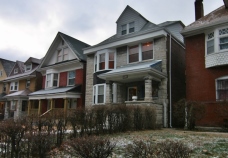 | 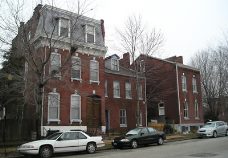 |

Overview:
South County is a triangle that borders the Riverfront and Central West End districts featuring family friendly neighborhoods, ordinary businesses, an abundance of parks, and a small town feel. The southern end across Interstate 270, while outside the domain, features a sparse landscape and quiet area centered around Butler Lakes. The north end stops at the outskirts of downtown and highways I-44 and I-55 provide quick access to and from.
District Modifiers:
Feeding Difficulty 7.
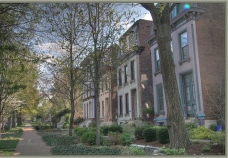 | 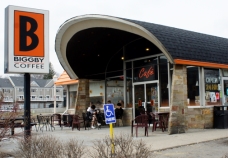 |

Overview:
The majority of northern riverfront access is private, but the entirety of the neighborhood along the mississippi tells the story of a city whose past and present remains entangled in industry and river travels. The northern part of riverfront is more exclusive, the southern part housing the most historical of STL’s industrial past.
District Modifiers:
Feeding Difficulty 5.
 | 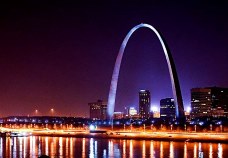 |

Overview:
Expansive upper-class neighborhoods like Frontenac, Ladue, Huntleigh, Town and Country, and Creve Coeur. The area may include expanded development of older areas such as Chesterfield and Wildwood. The area has one of the highest concentrations of wealth in the Midwest, and home to two of the most upscale shopping areas in St. Louis Region- Plaza Frontenac and The Galleria-Brentwood Square.
District Modifiers:
Feeding Difficulty 7. Feeding Difficulty decreased by 2 for Resource rating of three or more.
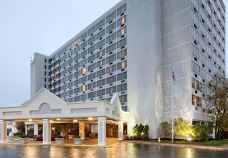 | 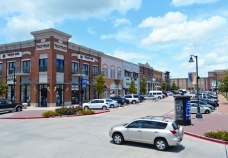 |

Overview:
A very cosmopolitan neighborhood featuring stunning turn-of-the-century palace-like homes, upscale dining, and boutique shopping, also contains an eclectic mix of antique shops, coffee houses, and art galleries; it also includes Cathedral Basilica of St. Louis
District Modifiers:
Feeding Difficulty 5.
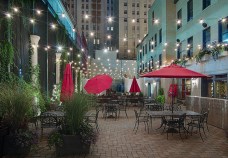 | 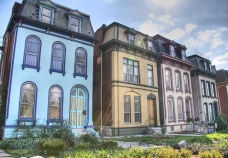 |

Overview:
This area of St. Louis was once considered as nothing more than another depressed urban core and today is the area of the city that blurs the lines between work and play. This exquisite mix of corporations, small businesses, residential lofts, boutiques, galleries, restaurants and nightlife spots, the neighborhood evolution has returned, making this the heart of the city's pulse with life and activity.
District Modifiers: Feeding Difficulty 6.
 | 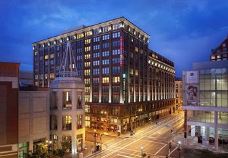 |

